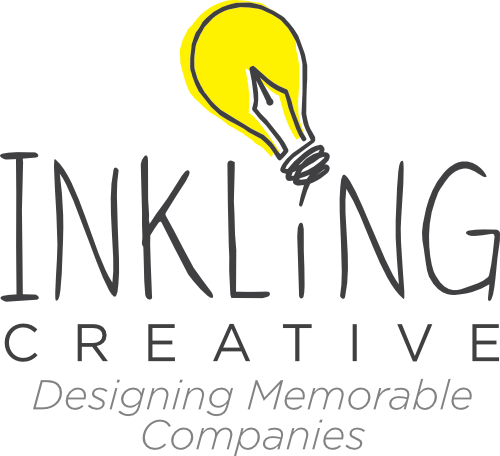“What is the meaning of life?” this age-old question is the foundational question of human existence – the question of purpose. We learn from life itself that every action should have an intended or desired result. This is also true of branding.
More...
We learned that when a company decides on a brand identity and a brand voice, we must consider a target audience. But to what end? For successful branding of course. But what is successful branding? What is the purpose of branding anyway?
Marketing vs. Branding
To understand the purpose of branding we must differentiate between branding and marketing. According to Spinweb, marketing involves three things:
- Listening to the market to learn what they want
- Finding a way to connect what you’re selling with what the market wants
- Telling the market how what you’re selling is just what they want
If branding is how our target customer perceives us, then marketing is actually reaching our target customer. But don’t get confused. According to the 22 Immutable Laws of Branding,
Marketing is not selling. Marketing is building a brand in the mind of the prospect. If you can build a powerful brand, you will have a powerful marketing program. If you can’t, then all the advertising, fancy packaging, sales promotion, web designs, and public relations in the world won’t help you achieve your objective.
In the 21st century, a brand, rather than a verbal endorsement by a salesperson, becomes the promise. When a marketing team is unclear about their “voice” – the brand they are portraying, they send many confusing messages. It is tempting to be who the market wants you to be rather than who you are. This leads to unmet expectations and “breaking promises.”
It reminds me of many high school dating relationships: a guy likes a certain type of girl. A different girl who is interested in that guy tries to act like the other girl because she likes him. She tries to be someone she is not.
If it works for her at all, it doesn’t work for long. Don’t try this in business: be who you are.
THE PURPOSE OF BRANDING
This means that in order to market successfully, a company must have a clear and concise brand. It can be said that a brand consists of a company's visuals, it's voice, and it's values. A company must know who they are and what their purpose is. Branding has as its goal three distinct purposes, clearly delineated by Petra Foster.
Identity
A brand knows who you are at your core. Effective branding consistently lives this identity and projects it to your audience. At the same time, effective branding invites your audience to journey along with you.
Foster addresses both brand appearance and brand voice when discussing this brand identity. She says that a brand’s appearance will grab your attention as you browse the store. She goes on to say that
There is also a psychological process that, as consumers, we all go through and subconsciously encourages us to buy.
Consumers connect with a brand in a meaningful way when they associate a certain set of values that they themselves hold with what the brand communicates.
Confidence
Branding is all about how your target audience perceives you. Because of this, it is important to send a clear, consistent message about the value and quality of their products or services. Providing consistent value gives your audience confidence in your brand.
Back to relationships: what if your significant other is always changing. One day they want to move across the country. One day they want to move to Europe. Another day they want to stay put for the rest of their life. The next day they can’t decide. You don’t know what they actually want, and neither do they. Their message isn’t clear. You don’t know what they are bringing to the table or the quality of life you will have with them. This brings no confidence, no security.
Providing consistent value gives your audience confidence in your brand.
Branding is the same. When a brand is not clear or consistent in their branding, they do not send clear signals. Customers want security and confidence in how a company’s product or service benefits them. This is called a brand promise, and customers want to know how this promise is backed up. It is imperative that a company is able to back their promise up. A successful, long-term brand cannot be built on wishful thinking.
Community

The third purpose of branding involves a company’s community. Whether done intentionally or not, brand segmentation occurs. Customers become loyal to one particular brand over another (think Coca-cola versus Pepsi). A company’s goal is to bring together a passionate, supportive fan-base forming a community that becomes brand advocates. In the age of social media, when this happens, it will result in referrals, retweets, shares, likes, and favorites.
Remember that this doesn’t just happen. Customers need a set of values that they can support. They need quality or value that they can stand behind. They need a reason to champion your company above others.

To do this, your company must answer the foundational questions of identity (who are we?) and purpose (what is our driving goal?) so that your branding [and thus] marketing has direction. This helps fulfill the purpose of branding: clearly communicating the brand identity to the target audience so that they become brand advocates.
What do you think? Would you add anything to the purpose of a brand or branding? Please comment below and share with your friends.
If you would like to receive the latest updates and blog posts and be the first to hear about news and promotions, please subscribe below.



I don’t disagree with anything here above. In a colorful world, as the one we live in, there is just one missing puzzle that I would like to contribute to the discussion. It has to do with consistency of brands – not the message, not the logo itself, but the cross-channel consistency of the brand COLORS. As a professional designer, I am sure you are just as annoyed as I am about how inconsistent, even big brand colors are – to the extent that you, as a professional designer, actually don’t KNOW which is the right Coca Cola red, – what it should look like and where you should get it (if you want to use it in your own designs) – online, in print, on TV. Yes, you can look up the Coca Cola brand guide, but you would probably not be able to recognize the Coca Cola red, if I just showed you the web version or even the print versions, alongside a few other shades of red. This is the next step in professional design. To define brand colors and use them consistently in all media, until the audience has seen the brand logo and the brand colors enough times to know the colors by heart – to be subconsciously reminded of that brand if they see a bus passing that is painted in the colors of that brand or a music video where the brand colors are used. Imagine the possibilities designers would have, if they didn’t have to write or say anything to remind people of a brand. No more inappropriate and annoying advertisements or posters – just displaying anonymous brand colors that don’t interrupt people but still serve the purpose of sending a message to the viewer. This is what the SMS color palette is all about. Absolute color consistency v.s. no color consistency in brand colors.
Very important point, Ingi! Thank you for giving us all something else to think about. Color consistency is definitely the next step in professional design. Many of the brands we all recognize wouldn’t be memorable or recognizable if they didn’t hold to strict consistency standards – Tiffany Blue or Starbucks Green.